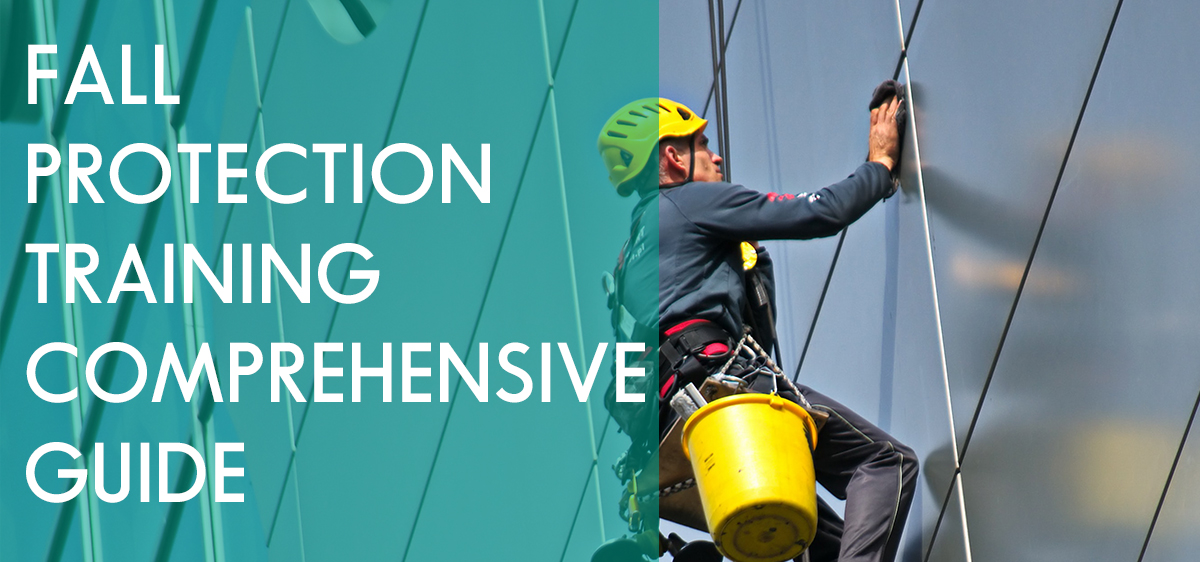
If you are looking for Working At Heights (WAH) training, you may wonder what the difference between WAH and fall arrest training is. This article will explore a fall protection training comprehensive guide. Although fall arrest training is sometimes referred to as if it were interchangeable with WAH training, they are not the same thing. So how do you choose the right training course for you and your field of work? This page outlines everything you need to know about fall arrest training vs Working At Heights training. Contact the experts at ACUTE today for more information about health and safety training!
Want to learn more about keeping yourself and staff safe on the job?
![]()
Fall Protection Training vs Working At Heights: What’s The Difference?

Understanding the difference between fall arrest training and Working At Heights training is important, especially if you work in the construction sector. Receiving proper, hands-on training for your job is the best way to prevent accidents, injuries, and deaths.
According to Canada’s Occupational Health & Safety Magazine, over 40,000 Canadians are injured each year due to fall accidents. This is why proper training is so important. Some WAH courses are also labelled fall arrest training. This can be confusing. The two most important questions to ask are:
- Does my workplace specifically require CPO approved Working at Heights training?
- Is the course I am about to take fall arrest training or WAH? Is it labelled as fall arrest training but is a CPO approved WAH course? Is it called Working at Heights but is not CPO approved?

Fall Prevention
• Can be modified to address your specific equipment
• Detailed handouts, videos, and quizzes
• Can be done at our facility or yours
Fall Arrest Training

Fall arrest training, sometimes also paired with or called fall prevention training, is another form of working from heights training.
Fall arrest training, however, is NOT a replacement for Ministry of Labour, Immigration, Training, and Skills Development’s Chief Prevention Officer Approved Working At Heights training. Workers who must receive WAH training due to MLITSD requirements cannot take fall arrest training instead.
Fall arrest training is more general than Working At Heights training, as WAH training is generally tailored to the construction industry. Fall arrest training can be modified to meet the specific needs of different industries.
ACUTE’s Fall Prevention course is geared towards those working in Industrial Establishments, Mining Operations, Health Care and Residential Facilities sectors and other workplaces that are not Construction Projects.
Some components of Fall Prevention training include:
- Fall prevention strategies and systems
- When is MLITSD Working At Heights training required
- Fall protection systems
- Rescue plan – components and purpose
- Controlling fall hazards
- And More!
Fall Hazards: In The News

Falling from heights accidents, injuries, and deaths can happen in any industry. From retail to healthcare and from construction to industrial workplaces, proper training is required in all workplaces.
In March 2015, Ontario Newsroom reported that a construction company was fined $90,000 after a worker was killed while working from heights. Though the worker had received Working At Heights training, he was not using any fall protection equipment. The young worker was pushed off the roof by a skid of concrete blocks.
In August 2017, CTV News reported that a man was in critical condition after falling 30 feet at an industrial plant. The OPP said they would be working with the MLITSD to determine what happened to cause the fall.
In April 2015, OHS Canada released statistics on farming accidents in Alberta. Information released by Alberta’s Office of the Chief Medical Examiner (OCME) found that a small portion of farming deaths were due to height-related accidents.
These examples above highlight the fact that height-related accidents and deaths can occur in any workplace. However, construction sites frequently turn up as one of the most dangerous places to work in Canada. According to the 2016 WSIB Statistical Report, 29% of traumatic fatalities occurred in the construction sector, making it the largest percentage of traumatic fatalities. 18% of traumatic fatalities were due to workplace falls, making it the second largest percentage, behind motor vehicle accidents.
Fall Arrest Training vs Working At Heights: Visual Comparison
See the infographic below for a summary of the differences between fall arrest training and Working At Heights training.
ACUTE helps organizations understand their training challenges while also taking care of the most crucial aspect of a safety program: providing unparalleled tailoring and customer service. Here are just a few things you can expect when training with ACUTE:

- Open Door Instructor-Student Partnership – ACUTE’s training services emphasize client participation. Staff want to build relationships with clients and serve as a touchstone for advice anytime moving forward.
- Serving Your Team and Industry – With a vast array of clients in manufacturing, construction, health, academic, and government agencies, ACUTE brings the best safety practices from across the spectrum to your workplace.
- 100 Years Combined Experience – ACUTE provides comprehensive health and safety training, on-site safety services, and consulting services. With over 100 years of combined experience, our staff offer more than theoretical or abstract ideas. ACUTE offers solutions.
- Track Record of Success – ACUTE is rated 4.9/5 stars on Google reviews, demonstrating a commitment to our clients, quality, and passion for training.
Ready for quality training in your workplace or on-site at
ACUTE’s proven training facilities?
ACUTE is located in Waterloo, Ontario and services customers from the cities such as Toronto, Mississauga, Brampton, Hamilton, Milton, Kitchener, London, Guelph, and other cities from across Ontario.
“We have used Acute Environmental & Safety Services Inc. for many years and our personnel always come back well trained, energized and bringing lots of ideas. They are provided with substantial and in-depth knowledge together with challenging opportunities to put into practice what they have learned into our field operations.”
– Dante, Environmental Service Company – Read More Testimonials Here!


